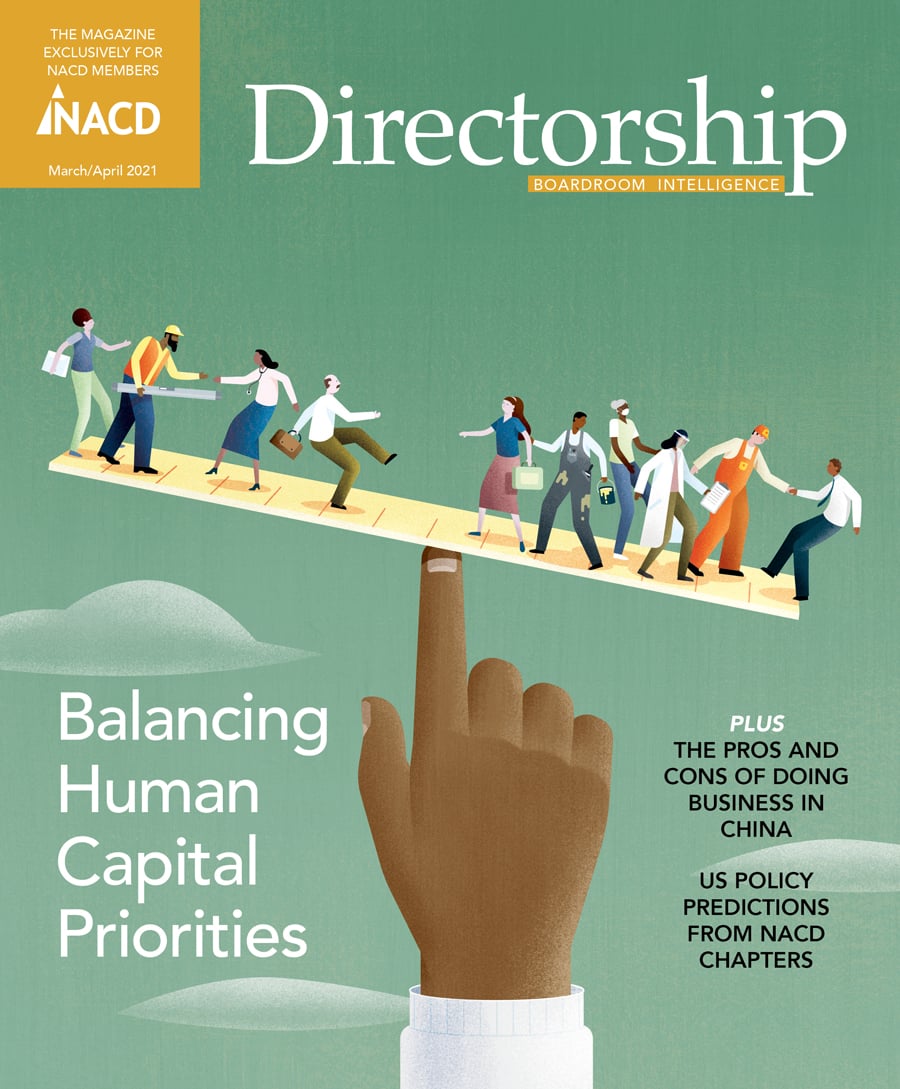
Online Exclusive
SEC Panel Foreshadows Major Changes for Compensation Disclosures
Track what updates may be in store for executive pay disclosures.
Directorship® Magazine
The Magazine for Boardrooms, Delivering Insights & Leadership Excellence

Governance Surveys
Directorship Magazine
Directorship Magazine Overview
Editor-in-Chief
Anita Narayan
Advertising Inquiries
Greg Griffith

New
Discover essential director traits and governance practices to build the right board in an evolving environment. Plus, plan for the future of work and consider the personal challenges leaders face when moving on from executive careers.
Directorship® magazine is a digital quarterly publication featuring original articles, news, and expert commentary from our editorial staff and guest contributors on leadership, business governance, technology, and more. This online library is created and curated for board members and corporate leaders seeking resources to navigate today’s boardroom challenges.
Online Exclusives from Directorship®
The most up-to-date and noteworthy articles including our former BoardTalk blog.


In this issue: Uncover the evolving strategies of shareholder activists as issue-based activism remains strong. Plus, navigate the potential impacts of the new US presidential administration and how to address burnout in the boardroom.

In this issue: Meet the 2024 NACD Directorship 100TM honorees and learn about their roles in shaping the success of the companies they serve. Plus, discover the key considerations for changing auditors.

In this issue: We explore what boards need to know about the impact of the 2024 US election on global trade, regulatory changes, and more.

In this issue: We show how with the right skills, knowledge, and intervention, boards can avoid strategy surprises and contribute decisively to business growth and value creation.


From the archives of Directorship magazine, member can access full issues through 2021.

The 2021 NACD Directorship 100

Digital Agility

Time Runs Out on Climate Challenge

Pre-IPO Boards Under Construction

Balancing Human Captial Priorities

The Yin and Yang, Profit and Purpose